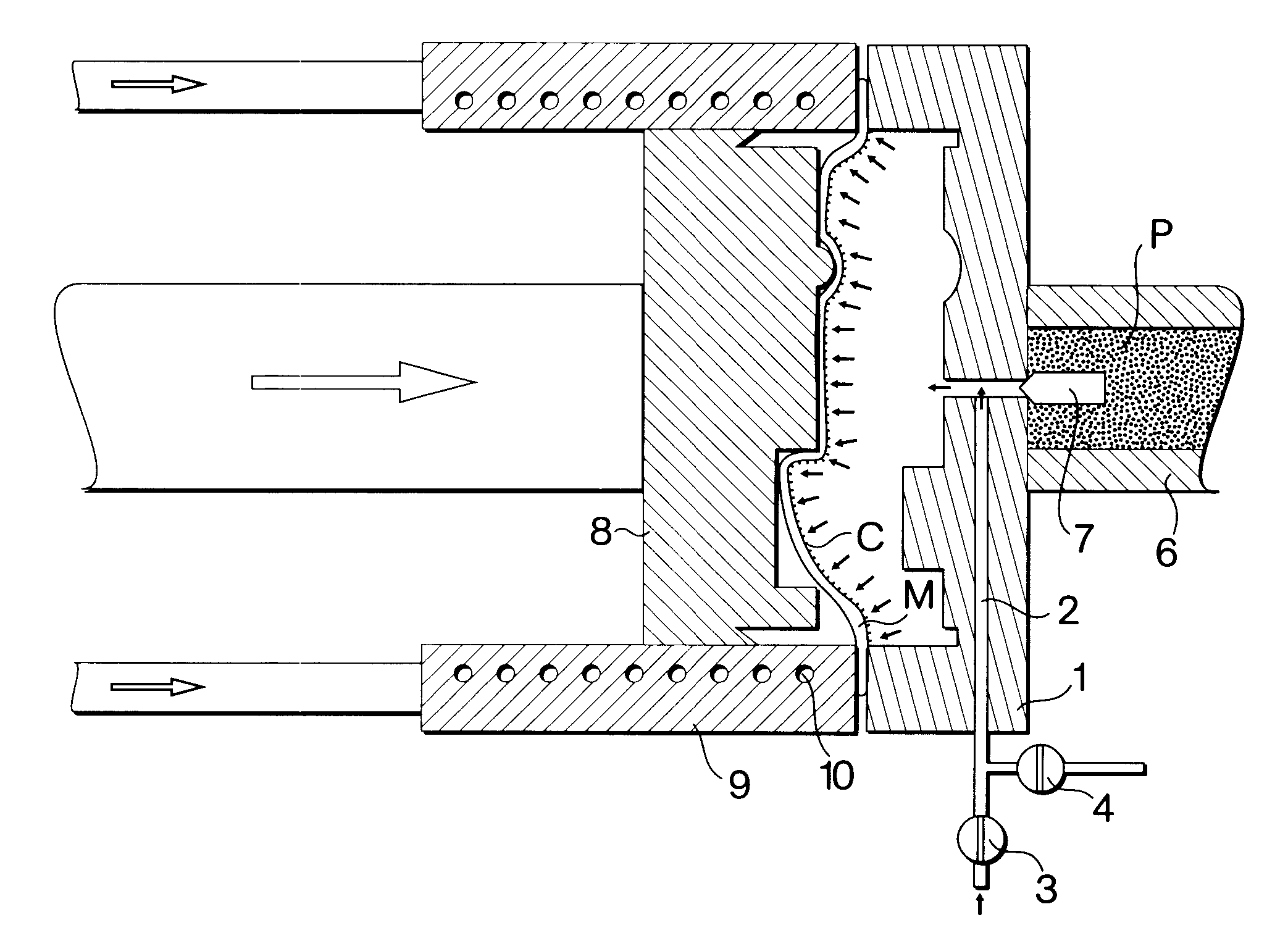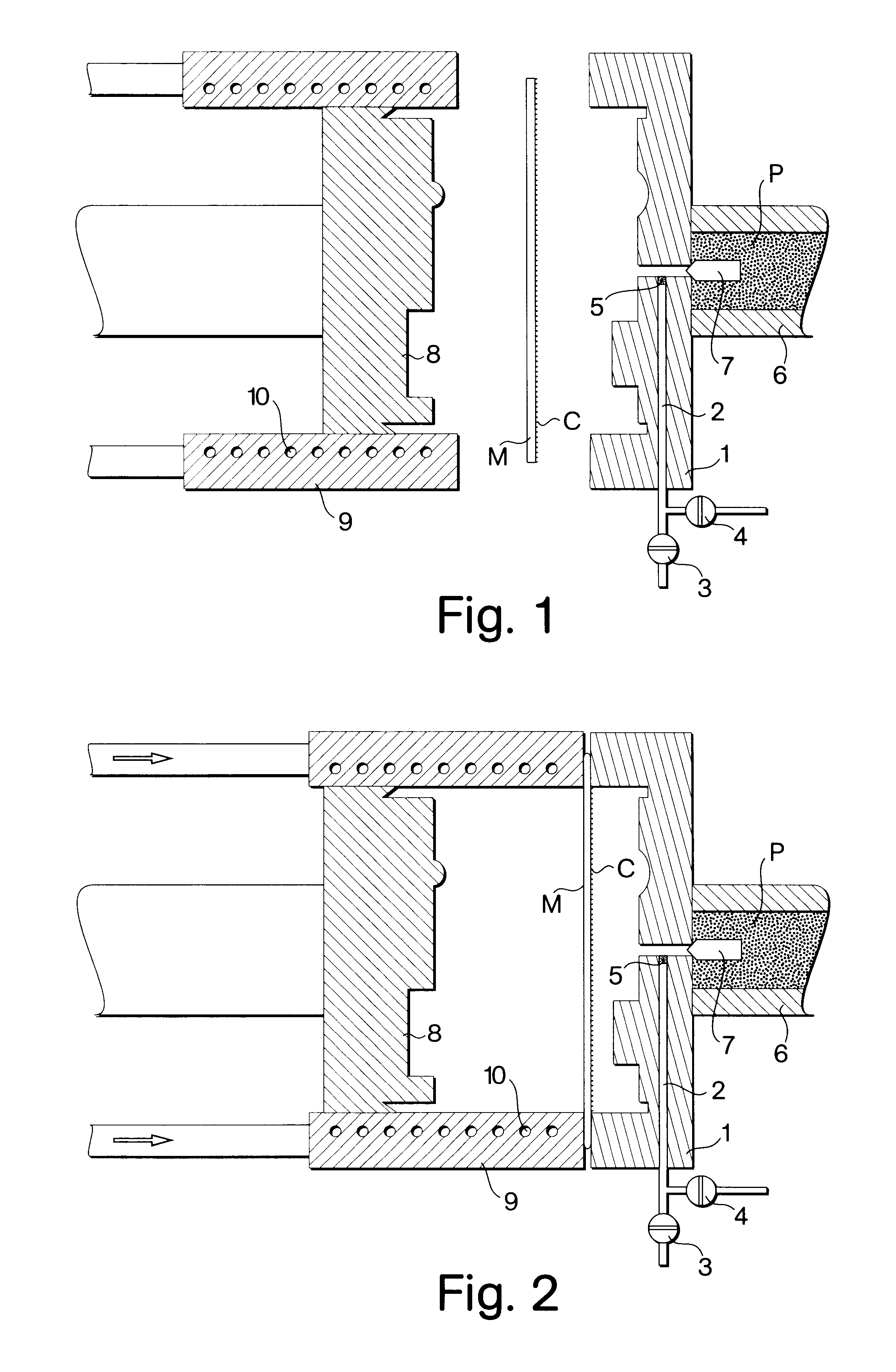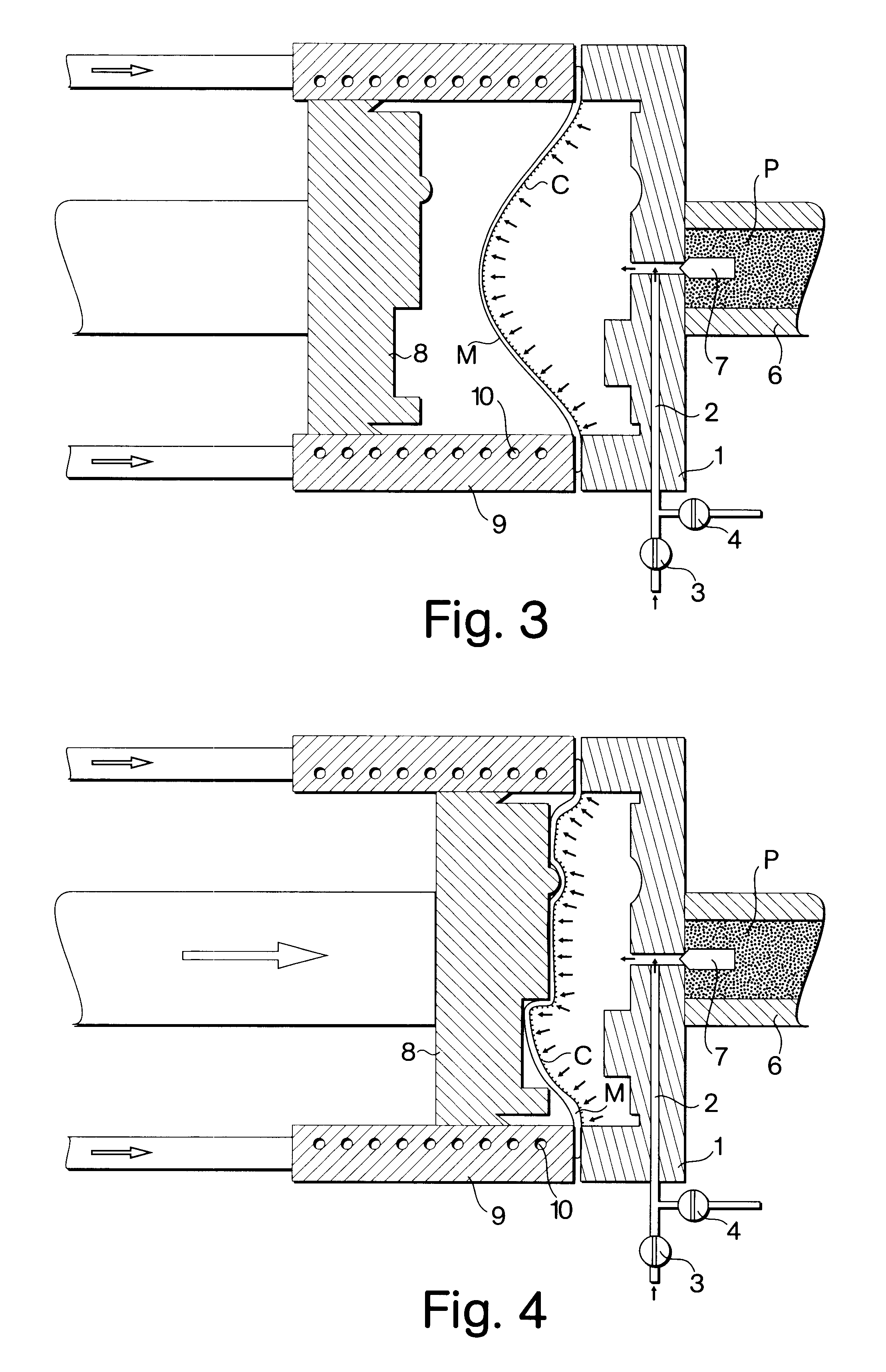Process for manufacturing an electromagnetic interference shielding metallic foil cladded plastic product
a technology of electromagnetic interference and metallic foil, which is applied in the direction of ceramic layered products, chemistry apparatus and processes, manufacturing tools, etc., can solve the problems of difficult to manufacture metallic shields with intricate shapes, the risk of damage to other equipment or components, and the risk of dense electromagnetic waves produced by electronic equipmen
- Summary
- Abstract
- Description
- Claims
- Application Information
AI Technical Summary
Problems solved by technology
Method used
Image
Examples
Embodiment Construction
The process was conducted according to the above descriptions. A coupling agent (Silane A-187 manufactured by UNION CARBIDE Chemicals and Plastics Company) was mixed with ethanol to a 1 wt % solution. A Zn-22Al superplastic alloy plate of 0.3 mm was sprayed with the coupling agent solution on one side. The pre-coated Zn-22Al plate was placed in a mold to be processed according to the above-mentioned process of the present invention. The mold was heated and maintained at 200.degree. C., and an argon atmosphere having a pressure of 0.1 kg / mm.sup.2 was introduced to the mold to superplastically blow the Zn-22Al plate into a foil about 0.2 mm thick.
Then, the argon pressure was shut off and the mold was evacuated to a reduced pressure of 10.sup.-3 Torr. Subsequently, softened ABS+20 wt. %PC was injected to the mold from the injection machine, and adhered onto one surface of the Zn-22Al foil. The ABS+20 wt. %PC so adhered has a thickness of about 1.8 mm.
The total thickness of the final el...
PUM
| Property | Measurement | Unit |
|---|---|---|
| temperature | aaaaa | aaaaa |
| shielding effectiveness | aaaaa | aaaaa |
| shielding effectiveness | aaaaa | aaaaa |
Abstract
Description
Claims
Application Information
 Login to View More
Login to View More - R&D
- Intellectual Property
- Life Sciences
- Materials
- Tech Scout
- Unparalleled Data Quality
- Higher Quality Content
- 60% Fewer Hallucinations
Browse by: Latest US Patents, China's latest patents, Technical Efficacy Thesaurus, Application Domain, Technology Topic, Popular Technical Reports.
© 2025 PatSnap. All rights reserved.Legal|Privacy policy|Modern Slavery Act Transparency Statement|Sitemap|About US| Contact US: help@patsnap.com



